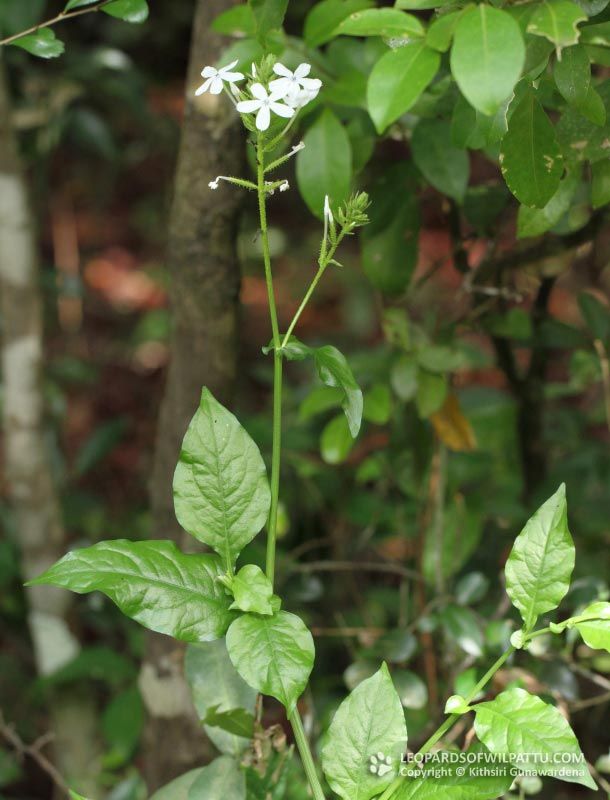
Wild Flowers ‹‹ Go Back
This is an indigenous species, which is found mainly in the dry zone forested areas of the country and is widely known for its many medicinal properties.
Other than in Sri Lanka this species occurs throughout the tropics and subtropics. This species is known to have originated from South-East Asia, from where it is presumed to have been distributed as a medicinal and an ornamental plant. It occurs throughout most of tropical Africa as well.
The conservation status of this species is regarded as Least Concerned (National Red List 2012).
This plant is widely used in Ayurveda medicine in Sri Lanka and India against fever, Malaria, Diarrhea, Piles and skin diseases. In Assam it is used for birth control and permanent sterilization.
It is very popular throughout Africa and Asia as a remedy for skin diseases, infections and intestinal worms, especially leprosy, scabies, ringworm, dermatitis, acne, sores, ulcers of the leg, hemorrhoids and hookworm. All parts of the plant are used, but the root is considered to have the highest activity. In West Africa the root, or the leaves crushed with lemon juice, are used as a counter-irritant and vesicant. The pulped roots or aerial parts are inserted into the vagina as an abortifacient. This is a dangerous practice as it sometimes results in death. In Nigeria the roots pounded with vegetable oil are applied to rheumatic swellings. In Ethiopia powdered bark, root or leaves are used to treat gonorrhea, syphilis, tuberculosis, rheumatic pain, swellings and wounds. In Congo and Gabon the pounded root is applied to treat itching. In East Africa pounded roots are applied to swollen legs. In Zambia a root decoction with boiled milk is swallowed to treat inflammation in the mouth, throat and chest. In southern Africa a paste of the root in vinegar, milk and water is used to treat influenza and blackwater fever. Plumbago zeylanica root cooked with meat in soup is eaten in Zimbabwe as an aphrodisiac, and it also helps digestion. A root infusion is taken orally to treat shortness of breath. In Madagascar the roots are applied as a vesicant, while in Mauritius and Rodrigues a root decoction is used to treat diarrhea and dyspepsia.
A paste of powdered root or the root sap is used for tattooing by different tribes in eastern Africa. The paste or sap causes blisters and the new skin has a darker colour. The long white inflorescence of Plumbago zeylanica makes it attractive as an ornamental. Despite the plant being poisonous, it is readily eaten by goats and sheep in West Africa.
This species is the host plant for a tiny species of butterfly that is commonly found at Wilpattu known as the Zebra Blue.
In Wilpattu I have observed the flowers of this species from November to March at many locations including Panikkar Villu upper road, between Kuruttupandi Villu and Manikkapola Uttu, between Mana Wila and Kanjuran Villu.





